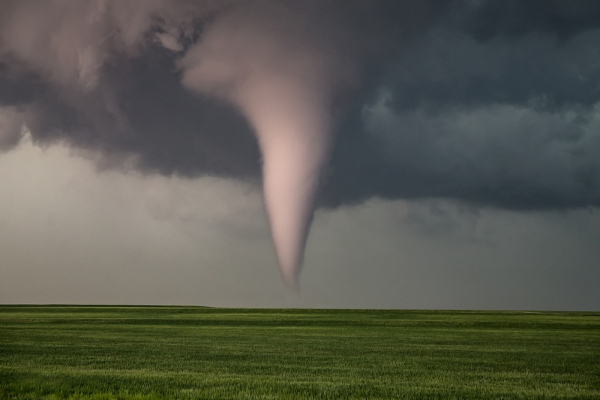
Written by: Kendra Meyer
Introduction
Tornadoes are one of nature’s most powerful and destructive forces. With their great force and potential to cause destruction in a matter of minutes, these furious whirlwinds capture our attention. In this post, we will look at the science underlying tornadoes, how they arise, what features they have, and how they affect the environment and human lives.
1. What You Need To Know About Tornadoes
Tornadoes are distinguished by the rotation of an air column that connects the base of a thunderstorm cloud to the Earth’s surface. Severe weather conditions, such as heavy rain, strong gusts, and lightning, are generally present. Tornadoes are often formed by strong thunderstorms, which offer the necessary ingredients.
2. Formation Process:
Tornadoes are caused by intricate interactions between warm, moist air masses and chilly, dry air masses. When these air masses combine, a supercell thunderstorm forms, which is the major breeding environment for tornadoes. Due to wind shear, a mesocyclone, or revolving updraft, forms within a supercell. The rotation of the mesocyclone can become more intense, forming a mesocyclonic vortex—a precursor to tornado generation.
3. Tornado Anatomy And Classification
Tornadoes can be found in a variety of shapes and sizes. The “classic” tornado, which appears as a dark, funnel-shaped cloud reaching from the sky to the ground, is the most common form. Tornadoes are normally several hundred meters broad but can span more than a kilometer. Waterspouts (tornadoes over bodies of water) and landspouts (tornadoes created by surface-based rotating updrafts) are two further forms.
4. The Enhanced Fujita Scale
Meteorologists utilize the Enhanced Fujita Scale (EF-Scale) to assess tornado strength and damage potential. This scale ranks tornadoes from EF0 (weakest) to EF5 (strongest), taking into consideration characteristics such as wind speed and damage severity. Understanding the EF-Scale aids in the analysis of past tornado events and the improvement of tornado preparedness tactics.
5. Impacts And Damage
Tornadoes are capable of wreaking havoc in a short period of time. Within a tornado, high-speed winds can surpass 300 miles per hour (480 kilometres per hour), smashing buildings, uprooting trees, and throwing debris far distances. Tornadoes can also cause damage to infrastructure, impede transportation, and endanger human lives.
6. Tornado Safety And Preparedness
Given the quick onset of tornadoes, having a well-defined safety plan in tornado-prone areas is critical. It is critical to seek refuge in a strong building, such as a basement or an internal room on the lowest level. Staying informed through weather alerts and stockpiling emergency supplies can help reduce tornado chances.
Conclusion
Tornadoes continue to be a captivating natural force, displaying both the beauty and terror that the natural world has to offer. Understanding the genesis, features, and repercussions of these ferocious whirlwinds is critical to improve our capacity to predict, prepare for, and reduce the harm inflicted by them. We can reduce the loss of life and damage by raising awareness and implementing efficient safety measures, allowing us to marvel at the raw force of tornadoes while remaining safe in their midst.
